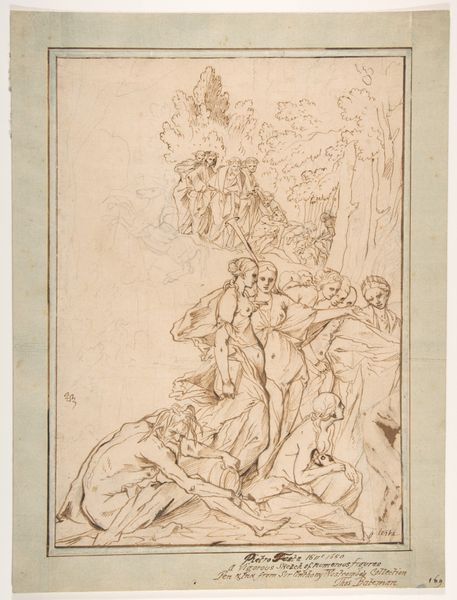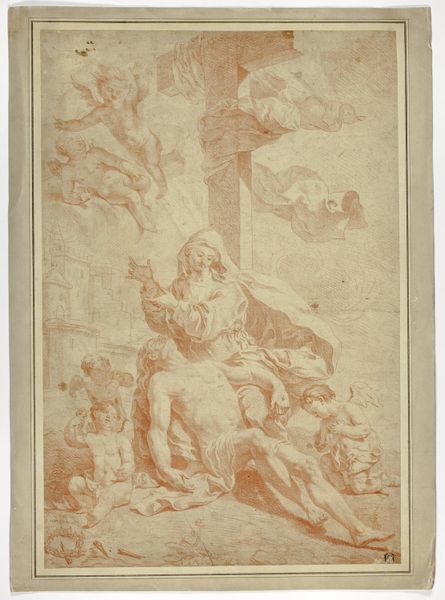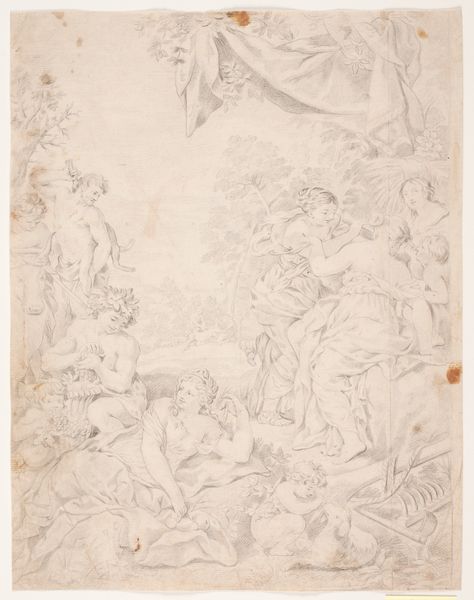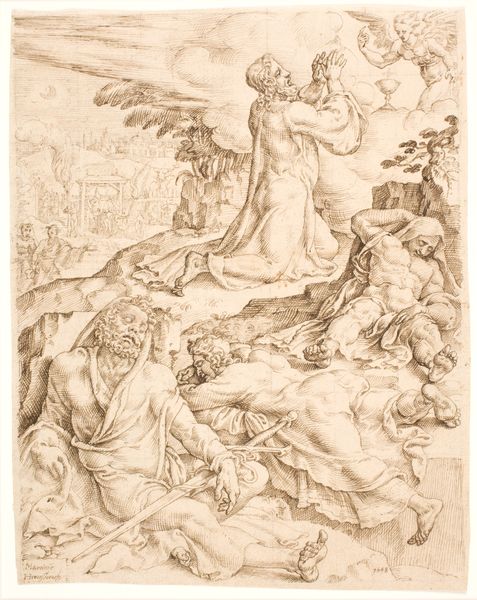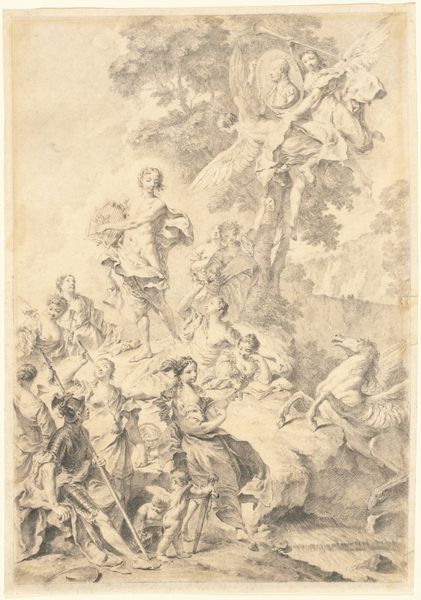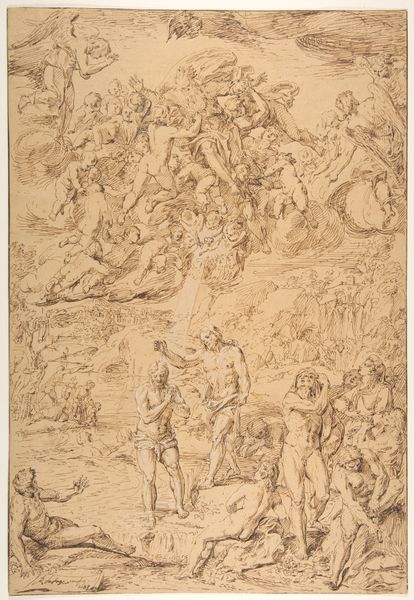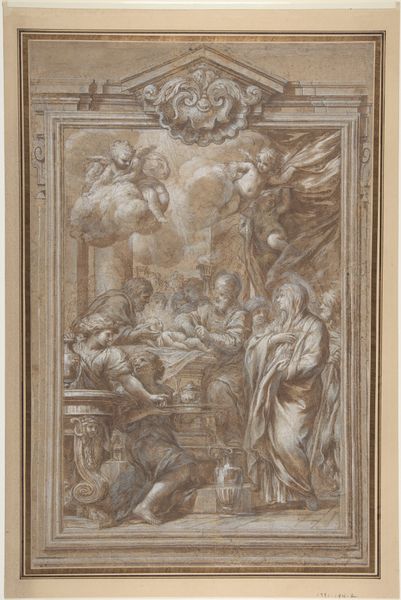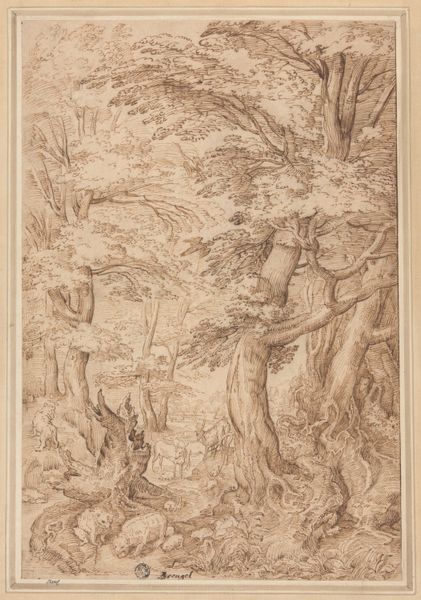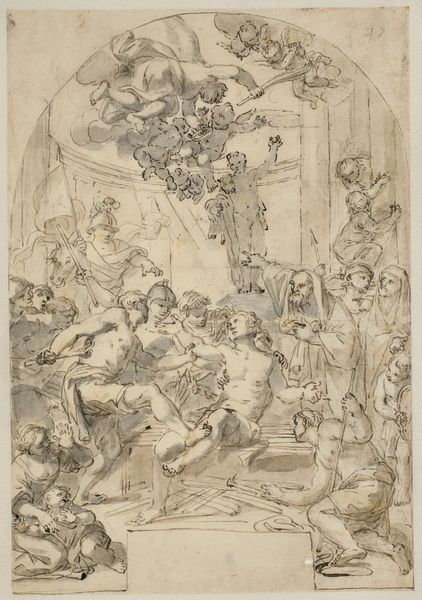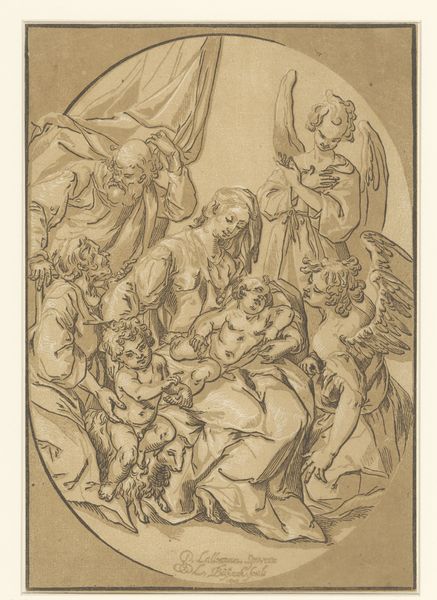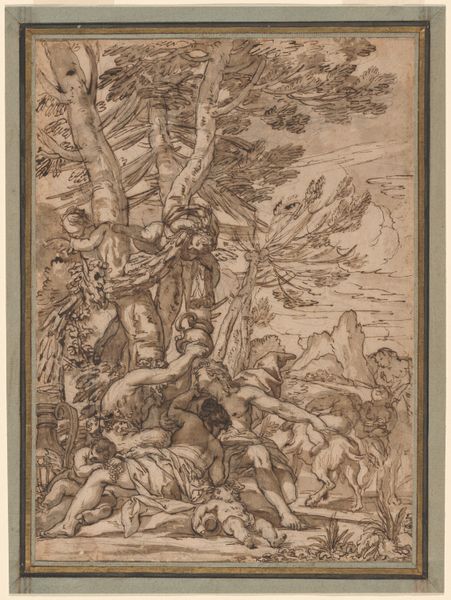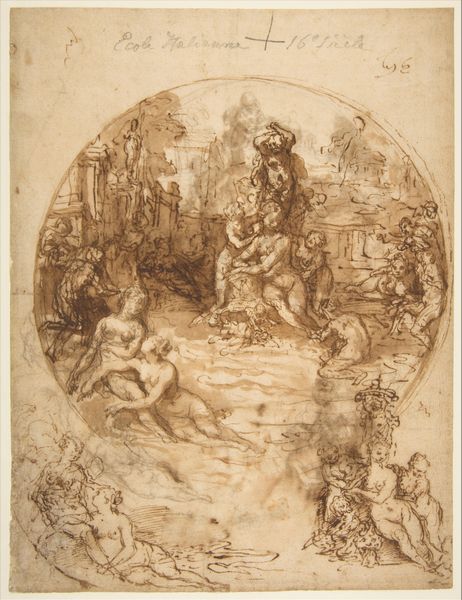
drawing, print, charcoal
#
drawing
#
ink painting
# print
#
landscape
#
figuration
#
genre-painting
#
charcoal
#
history-painting
Dimensions: 13 9/16 x 8 15/16 in. (34.5 x 22.7 cm)
Copyright: Public Domain
Editor: So, here we have François Boucher’s "Vertumnus and Pomona," dating roughly from 1700 to 1770, residing at the Met. It’s a drawing, done with charcoal, ink, and possibly some printmaking techniques? It feels so whimsical and dreamy, like stepping into a forgotten fairy tale. What leaps out at you when you look at it? Curator: Oh, this piece whispers secrets, doesn't it? Boucher had this incredible knack for infusing classical mythology with such a palpable sense of, well, almost mischievous humanity. Look at how Vertumnus, disguised as an old woman, is pleading his case! What do you make of that little cluster of cherubs up top, overseeing this amorous charade? Are they witnesses or conspirators? Editor: I see what you mean. It is hard to take the mythology seriously. I was trying to figure out why Pomona looks almost, well, faint, and you know I was thinking that she could be feigning shyness, because what's more mischievous than a love trick? It almost looks like she's smiling. Is it really that inappropriate to have that playful, humanistic take? Curator: "Inappropriate?" Never! That's where Boucher truly shines. He wasn’t interested in solemn pronouncements, like a history painter! He relished the flirtatious dance, the knowing glance, the sheer delight of earthly pleasures, though those could be scandalous at times. It’s like he’s winking at us, inviting us to not take everything so darn seriously. Look closely, there, can you see where he’s layered the charcoal to build up the light? Editor: I do, especially on her face, giving it that luminescent glow that sells the flirtatious reading of it. Curator: Exactly! And the background—the blurring of the figures almost fades the world away, suggesting that all that matters is happening between Pomona and Vertumnus. He pulls us into their little romantic universe. Art history, for me, is always just as much a mirror of the artist as the people and contexts around the artwork. Editor: That's beautiful! I never thought about landscape drawing offering such a deeply personal reflection on universal experience. Curator: It’s where the magic truly lies, wouldn't you say?
Comments
No comments
Be the first to comment and join the conversation on the ultimate creative platform.

